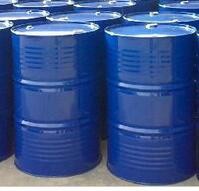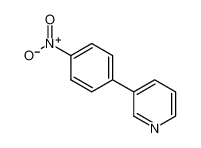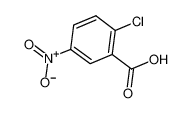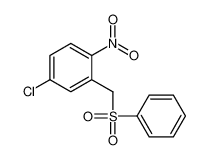| Product name | 4-Chloronitrobenzene |
|---|
| Product number | - |
|---|---|
| Other names | 1-chloro-4-nitrobenzene |
| Identified uses | For industry use only. |
|---|---|
| Uses advised against | no data available |
| Company | MOLBASE (Shanghai) Biotechnology Co., Ltd. |
|---|---|
| Address | Floor 4 & 5, Building 12, No. 1001 North Qinzhou Road, Xuhui District, Shanghai, China |
| Telephone | +86(21)64956998 |
| Fax | +86(21)54365166 |
| Emergency phone number | +86-400-6021-666 |
|---|---|
| Service hours | Monday to Friday, 9am-5pm (Standard time zone: UTC/GMT +8 hours). |
Acute toxicity - Oral, Category 3
Acute toxicity - Dermal, Category 3
Acute toxicity - Inhalation, Category 3
Germ cell mutagenicity, Category 2
Carcinogenicity, Category 2
Specific target organ toxicity – repeated exposure, Category 2
Hazardous to the aquatic environment, long-term (Chronic) - Category Chronic 2
2.2 GHS label elements, including precautionary statements| Pictogram(s) |    |
|---|---|
| Signal word | Danger |
| Hazard statement(s) | H301 Toxic if swallowed H311 Toxic in contact with skin H331 Toxic if inhaled H341 Suspected of causing genetic defects H351 Suspected of causing cancer H411 Toxic to aquatic life with long lasting effects |
| Precautionary statement(s) | |
| Prevention | P264 Wash ... thoroughly after handling. P270 Do not eat, drink or smoke when using this product. P280 Wear protective gloves/protective clothing/eye protection/face protection. P261 Avoid breathing dust/fume/gas/mist/vapours/spray. P271 Use only outdoors or in a well-ventilated area. P201 Obtain special instructions before use. P202 Do not handle until all safety precautions have been read and understood. P260 Do not breathe dust/fume/gas/mist/vapours/spray. P273 Avoid release to the environment. |
| Response | P301+P310 IF SWALLOWED: Immediately call a POISON CENTER/doctor/… P321 Specific treatment (see ... on this label). P330 Rinse mouth. P302+P352 IF ON SKIN: Wash with plenty of water/... P312 Call a POISON CENTER/doctor/…if you feel unwell. P361+P364 Take off immediately all contaminated clothing and wash it before reuse. P304+P340 IF INHALED: Remove person to fresh air and keep comfortable for breathing. P311 Call a POISON CENTER/doctor/… P308+P313 IF exposed or concerned: Get medical advice/ attention. P314 Get medical advice/attention if you feel unwell. P391 Collect spillage. |
| Storage | P405 Store locked up. P403+P233 Store in a well-ventilated place. Keep container tightly closed. |
| Disposal | P501 Dispose of contents/container to ... |
none
3.Composition/information on ingredients 3.1 Substances| Chemical name | Common names and synonyms | CAS number | EC number | Concentration |
|---|---|---|---|---|
| 4-Chloronitrobenzene | 4-Chloronitrobenzene | 100-00-5 | none | 100% |
Consult a physician. Show this safety data sheet to the doctor in attendance.
If inhaledFresh air, rest. Refer for medical attention.
In case of skin contactFirst rinse with plenty of water for at least 15 minutes, then remove contaminated clothes and rinse again. Rinse skin with plenty of water or shower. Refer for medical attention .
In case of eye contactFirst rinse with plenty of water for several minutes (remove contact lenses if easily possible), then refer for medical attention.
If swallowedRinse mouth. Induce vomiting (ONLY IN CONSCIOUS PERSONS!).
4.2 Most important symptoms/effects, acute and delayedExposure Routes: inhalation, skin absorption, ingestion, skin and/or eye contact Symptoms: Anoxia; unpleasant taste; anemia; methemoglobinemia Target Organs: Blood, liver, kidneys, cardiovascular system, spleen, bone marrow, reproductive system (NIOSH, 2016)
4.3 Indication of immediate medical attention and special treatment needed, if necessary/SRP:/ Basic treatment: Establish a patent airway (oropharyngeal or nasopharyngeal airway, if needed). Suction if necessary. Watch for signs of respiratory insufficiency and assist ventilations if necessary. Administer oxygen by nonrebreather mask at 10 to 15 L/min. Monitor for pulmonary edema and treat if necessary ... . Monitor for shock and treat if necessary ... . Anticipate seizures and treat if necessary ... . For eye contamination, flush eyes immediately with water. Irrigate each eye continuously with 0.9% saline (NS) during transport ... . Do not use emetics. For ingestion, rinse mouth and administer 5 mL/kg up to 200 mL of water for dilution if the patient can swallow, has a strong gag reflex, and does not drool. Administer activated charcoal ... . /Aromatic hydrocarbons and related compounds/
5.Fire-fighting measures 5.1 Extinguishing media Suitable extinguishing mediaWater may cause foaming or frothing. Use water spray, dry chemical, foam, or carbon dioxide. /chloronitrobenzens/
5.2 Specific hazards arising from the chemicalThis compound is combustible.
5.3 Special protective actions for fire-fightersWear self-contained breathing apparatus for firefighting if necessary.
6.Accidental release measures 6.1 Personal precautions, protective equipment and emergency proceduresUse personal protective equipment. Avoid dust formation. Avoid breathing vapours, mist or gas. Ensure adequate ventilation. Evacuate personnel to safe areas. Avoid breathing dust. For personal protection see section 8.
6.2 Environmental precautionsSweep spilled substance into covered sealable containers. If appropriate, moisten first to prevent dusting. Carefully collect remainder. Then store and dispose of according to local regulations. Do NOT absorb in saw-dust or other combustible absorbents. Do NOT let this chemical enter the environment. Personal protection: complete protective clothing including self-contained breathing apparatus.
6.3 Methods and materials for containment and cleaning upEvacuate persons not wearing protective equipment from area of spill or leak until clean-up is complete. Remove all ignition sources. Dampen spilled material with alcohol to avoid dust, then transfer material to a suitable container. Use HEPA vacuum or wet method to reduce dist during clean-up. Do not dry sweep. Collect powdered material in the most convenient and safe manner and deposit in sealed containers. Ventilate area after clean-up is complete. It may be necessary to contain and dispose of this chemical as a hazardous waste. If material or contaminated runoff enters waterways, notify downstream users of potentially contaminated waters. Contact your Department of Environmental Protection or your regional office of the federal EPA for specific recommendations. If employees are required to clean-up spills, they must be properly trained and equipped. OSHA 1910.120(q) may be applicable.
7.Handling and storage 7.1 Precautions for safe handlingAvoid contact with skin and eyes. Avoid formation of dust and aerosols. Avoid exposure - obtain special instructions before use.Provide appropriate exhaust ventilation at places where dust is formed. For precautions see section 2.2.
7.2 Conditions for safe storage, including any incompatibilitiesSeparated from combustible substances, reducing agents and food and feedstuffs. Keep in a well-ventilated room.Store in cool, dry, well-ventilated location. Separate from alkalies and oxidizing materials. /Chloronitrobenzenes/
8.Exposure controls/personal protection 8.1 Control parameters Occupational Exposure limit valuesNIOSH considers p-nitrochlorobenzene to be a potential occupational carcinogen.
Biological limit valuesno data available
8.2 Appropriate engineering controlsHandle in accordance with good industrial hygiene and safety practice. Wash hands before breaks and at the end of workday.
8.3 Individual protection measures, such as personal protective equipment (PPE) Eye/face protectionSafety glasses with side-shields conforming to EN166. Use equipment for eye protection tested and approved under appropriate government standards such as NIOSH (US) or EN 166(EU).
Skin protectionWear impervious clothing. The type of protective equipment must be selected according to the concentration and amount of the dangerous substance at the specific workplace. Handle with gloves. Gloves must be inspected prior to use. Use proper glove removal technique(without touching glove's outer surface) to avoid skin contact with this product. Dispose of contaminated gloves after use in accordance with applicable laws and good laboratory practices. Wash and dry hands. The selected protective gloves have to satisfy the specifications of EU Directive 89/686/EEC and the standard EN 374 derived from it.
Respiratory protectionWear dust mask when handling large quantities.
Thermal hazardsno data available
9.Physical and chemical properties| Physical state | light yellow crystals |
|---|---|
| Colour | Monoclinic prisms |
| Odour | Sweet odor |
| Melting point/ freezing point | 230°C(lit.) |
| Boiling point or initial boiling point and boiling range | 242°C(lit.) |
| Flammability | Solid that does not burn, or burns with difficulty.Combustible. Many reactions may cause fire or explosion. |
| Lower and upper explosion limit / flammability limit | no data available |
| Flash point | 107°C(lit.) |
| Auto-ignition temperature | no data available |
| Decomposition temperature | no data available |
| pH | no data available |
| Kinematic viscosity | 1.07X10-3 Pa-s at 356.65 deg K |
| Solubility | In water:Insoluble |
| Partition coefficient n-octanol/water (log value) | log Kow = 2.39 |
| Vapour pressure | 0.09 mm Hg ( 25 °C) |
| Density and/or relative density | 1.298 |
| Relative vapour density | 5.4 (vs air) |
| Particle characteristics | no data available |
no data available
10.2 Chemical stabilityStable under recommended storage conditions.
10.3 Possibility of hazardous reactionsFIRE HAZARD SLIGHT WHEN EXPOSED TO HEAT OR FLAME.P-NITROCHLOROBENZENE reacts with oxidizing agents. Reacts violently and finally explosively when added to a solution of sodium methoxide in methanol. . Unstable when heated.
10.4 Conditions to avoidno data available
10.5 Incompatible materialsA strong oxidizer. Reacts violently with oxidizers, combustibles, alkalis, sodium methoxide, and reducing materials.
10.6 Hazardous decomposition products...WHEN HEATED TO DECOMPOSITION IT EMITS VERYY TOXIC FUMES OF /NITROGEN OXIDES AND HYDROGEN CHLORIDE./
11.Toxicological information Acute toxicity- Oral: LD50 Rat oral 530 mg/kg
- Inhalation: no data available
- Dermal: no data available
no data available
Serious eye damage/irritationno data available
Respiratory or skin sensitizationno data available
Germ cell mutagenicityno data available
CarcinogenicityEvaluation: There is inadequate evidence in humans for the carcinogenicity of chloronitrobenzenes. There is inadequate evidence in experimental animals for the carcinogenicity of chloronitrobenzenes. Overall evaluation: Chloronitrobenzenes are not classifiable as to their carcinogenicity to humans (Group 3). /Chloronitrobenzenes/
Reproductive toxicityno data available
STOT-single exposureno data available
STOT-repeated exposureno data available
Aspiration hazardno data available
12.Ecological information 12.1 Toxicity- Toxicity to fish: LC50 Lepomis macrochirus (bluegill sunfish) 70 ug/L for 96 hr, static
- Toxicity to daphnia and other aquatic invertebrates: LC50; Species: Daphnia magna (Water flea, <24 hr old); Conditions: freshwater, static, 20°C, pH 8.2, hardness 250 mg/L CaCO3, dissolved oxygen >6.5 mg/L; Concentration: 6700 ug/L for 48 hr (95% confidence interval: 3200-10000 ug/L) />98% purity
- Toxicity to algae: no data available
- Toxicity to microorganisms: no data available
AEROBIC: 10 ug/mL 1-chloro-4-nitrobenzene inoculated with a mixed culture of microorganisms in soil was observed to be resistant to biodegradation (significant ring cleavage, as measured by UV absorbance, was not detected after 64 days)(1). 1-Chloro-4-nitrobenzene , present at 100 mg/L, reached 0 percent of its theoretical BOD in 2 weeks using an activated sludge inoculum at 30 mg/L and the Japanese MITI test(2).
12.3 Bioaccumulative potentialCarp exposed to solutions containing 0.15 ppm 1-chloro-4-nitrobenzene for 8 weeks had BCF values ranging from 5.8-20.9, and carp exposed to solutions containing 0.015 ppm 1-chloro-4-nitrobenzene had BCF values ranging from 7.5-18.1(1). According to a classification scheme(2), these BCF values suggest bioconcentration in aquatic organisms is low(SRC).
12.4 Mobility in soilUsing a structure estimation method based on molecular connectivity indices(1), the Koc of 1-chloro-4-nitrobenzene can be estimated to be 310(SRC). According to a classification scheme(2), this estimated Koc value suggests that 1-chloro-4-nitrobenzene is expected to have moderate mobility in soil(SRC).
12.5 Other adverse effectsno data available
13.Disposal considerations 13.1 Disposal methods ProductThe material can be disposed of by removal to a licensed chemical destruction plant or by controlled incineration with flue gas scrubbing. Do not contaminate water, foodstuffs, feed or seed by storage or disposal. Do not discharge to sewer systems.
Contaminated packagingContainers can be triply rinsed (or equivalent) and offered for recycling or reconditioning. Alternatively, the packaging can be punctured to make it unusable for other purposes and then be disposed of in a sanitary landfill. Controlled incineration with flue gas scrubbing is possible for combustible packaging materials.
14.Transport information 14.1 UN Number| ADR/RID: UN1578 | IMDG: UN1578 | IATA: UN1578 |
| ADR/RID: CHLORONITROBENZENES, SOLID |
| IMDG: CHLORONITROBENZENES, SOLID |
| IATA: CHLORONITROBENZENES, SOLID |
| ADR/RID: 6.1 | IMDG: 6.1 | IATA: 6.1 |
| ADR/RID: II | IMDG: II | IATA: II |
| ADR/RID: yes | IMDG: yes | IATA: yes |
no data available
14.7 Transport in bulk according to Annex II of MARPOL 73/78 and the IBC Codeno data available
15.Regulatory information 15.1 Safety, health and environmental regulations specific for the product in question| Chemical name | Common names and synonyms | CAS number | EC number |
|---|---|---|---|
| 4-Chloronitrobenzene | 4-Chloronitrobenzene | 100-00-5 | none |
| European Inventory of Existing Commercial Chemical Substances (EINECS) | Listed. | ||
| EC Inventory | Listed. | ||
| United States Toxic Substances Control Act (TSCA) Inventory | Listed. | ||
| China Catalog of Hazardous chemicals 2015 | Listed. | ||
| New Zealand Inventory of Chemicals (NZIoC) | Listed. | ||
| Philippines Inventory of Chemicals and Chemical Substances (PICCS) | Listed. | ||
| Vietnam National Chemical Inventory | Not Listed. | ||
| Chinese Chemical Inventory of Existing Chemical Substances (China IECSC) | Listed. | ||
| Creation Date | Aug 10, 2017 |
|---|---|
| Revision Date | Aug 10, 2017 |
- CAS: Chemical Abstracts Service
- ADR: European Agreement concerning the International Carriage of Dangerous Goods by Road
- RID: Regulation concerning the International Carriage of Dangerous Goods by Rail
- IMDG: International Maritime Dangerous Goods
- IATA: International Air Transportation Association
- TWA: Time Weighted Average
- STEL: Short term exposure limit
- LC50: Lethal Concentration 50%
- LD50: Lethal Dose 50%
- EC50: Effective Concentration 50%
- IPCS - The International Chemical Safety Cards (ICSC), website: http://www.ilo.org/dyn/icsc/showcard.home
- HSDB - Hazardous Substances Data Bank, website: https://toxnet.nlm.nih.gov/newtoxnet/hsdb.htm
- IARC - International Agency for Research on Cancer, website: http://www.iarc.fr/
- eChemPortal - The Global Portal to Information on Chemical Substances by OECD, website: http://www.echemportal.org/echemportal/index?pageID=0&request_locale=en
- CAMEO Chemicals, website: http://cameochemicals.noaa.gov/search/simple
- ChemIDplus, website: http://chem.sis.nlm.nih.gov/chemidplus/chemidlite.jsp
- ERG - Emergency Response Guidebook by U.S. Department of Transportation, website: http://www.phmsa.dot.gov/hazmat/library/erg
- Germany GESTIS-database on hazard substance, website: http://www.dguv.de/ifa/gestis/gestis-stoffdatenbank/index-2.jsp
- ECHA - European Chemicals Agency, website: https://echa.europa.eu/




































